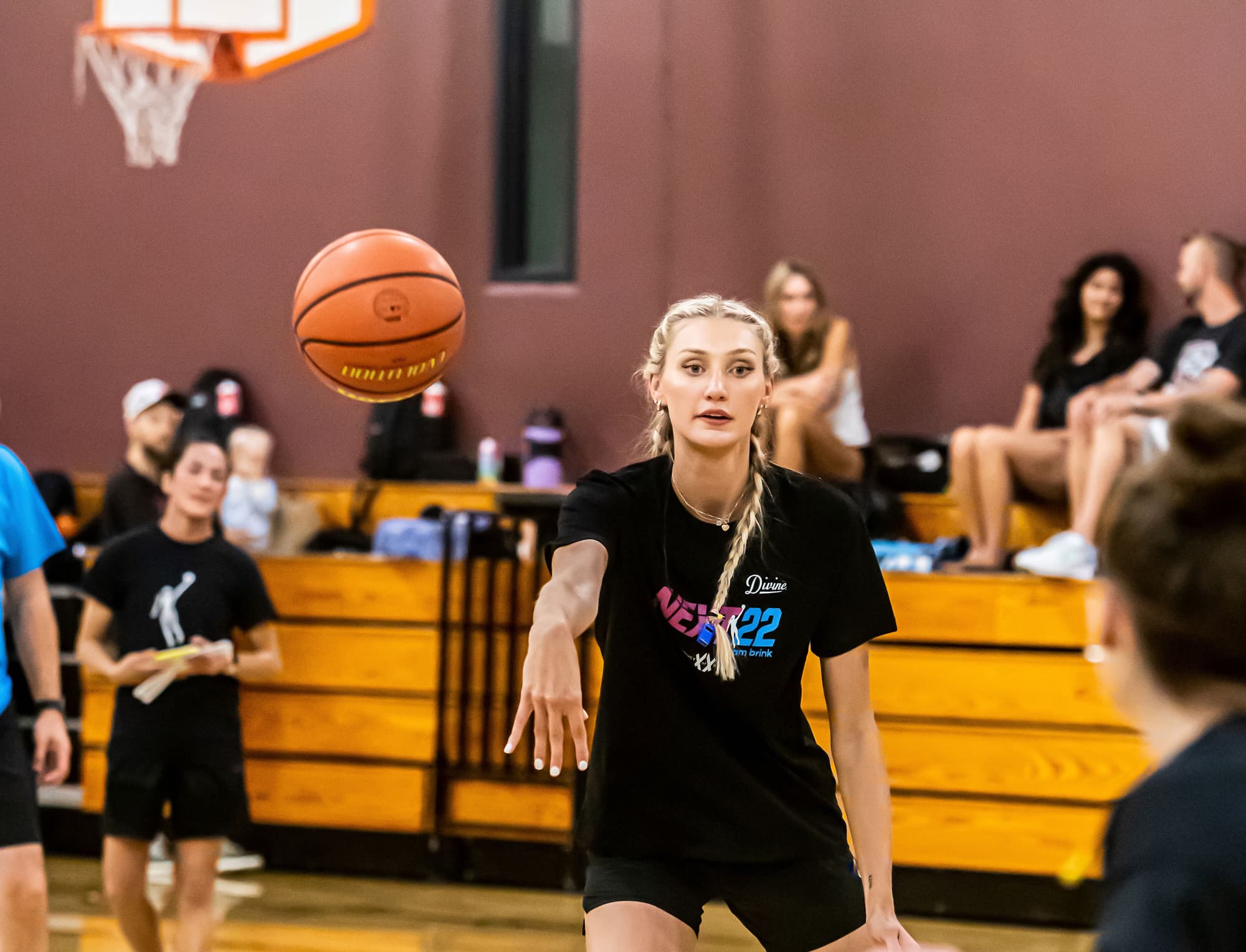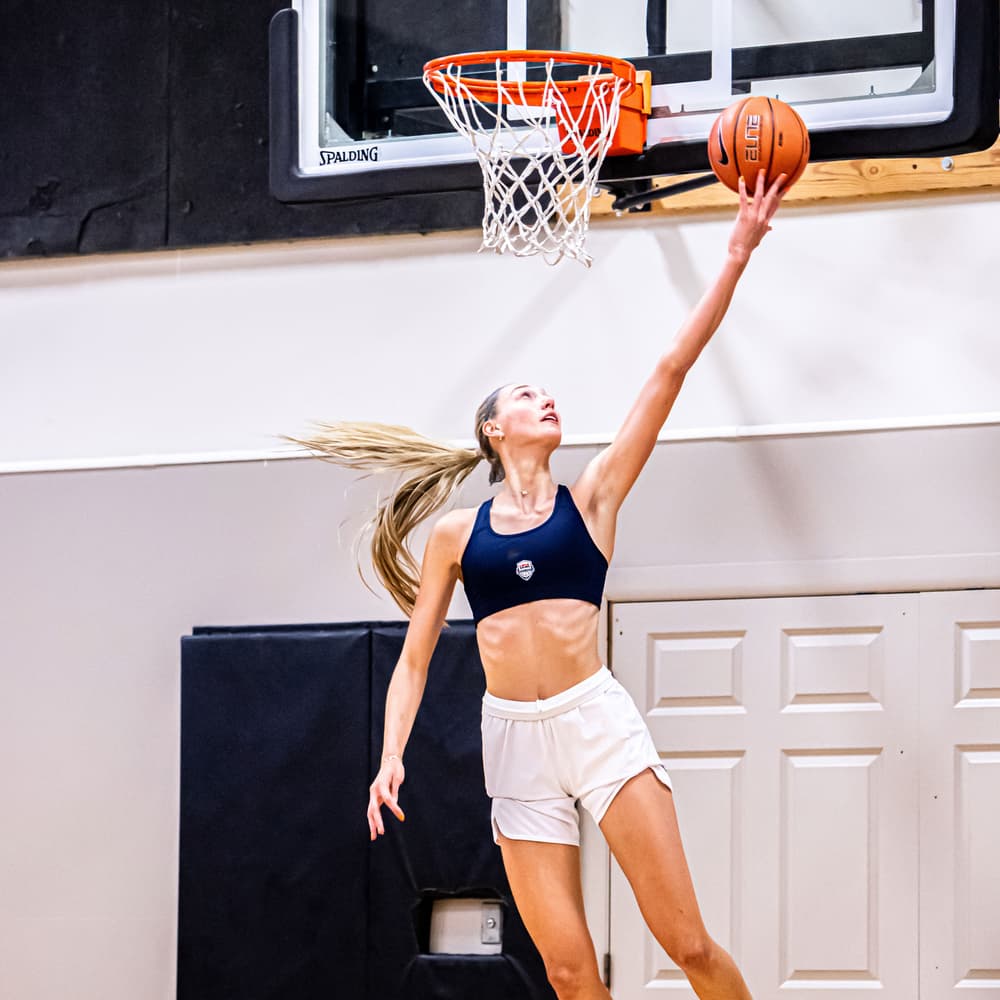Cameron Brink achieves visual freedom with the EVO implantable lenses
Basketball Player
Basketball Player

Vision struggles on and off the court
Cameron Brink, a star on the women’s basketball team of Stanford University, faced the daily struggles of glasses and contacts, impacting both her personal and professional life.

EVO ICL: the game-changer
Join her in experiencing the world with newfound clarity and confidence. For those on the fence about EVO ICL, Cameron passionately encourages,
"Talk to your eye doctor today. It's truly a life-changing procedure!"
Ready to embrace a life without the hassle of glasses and contacts? Discover the possibilities with EVO ICL. Call an EVO advisor today to schedule an appointment with an eye doctor near you, and embark on your own journey towards visual freedom!
Viktig säkerhetsinformation
ICL är utformad för att korrigera eller minska närsynthet hos patienter mellan 21 och 60 år och för patienter som är 21 år eller äldre som har behandlats med en intraokulär lins, med en synstyrka från -0,5 D till -20,0 D, med eller utan astigmatism upp till 6,0 D. ICL används också för att korrigera eller minska översynthet hos patienter mellan 21 och 45 år samt för patienter 21 år eller äldre som har behandlats med en intraokulär lins, med en synstyrka från +0,5 D till +16,0 D, med eller utan astigmatism upp till 6,0 D. För att säkerställa att din kirurg använder en ICL med rätt styrka för ditt öga, bör din närsynthet, översynthet och astigmatism vara stabil i minst ett år innan du genomgår ögonkirurgi. ICL-kirurgi kan förbättra din syn utan glasögon eller kontaktlinser. Eftersom myopiska och hyperopiska ICL-linser korrigerar avståndsseende, elimineras inte behovet av läsglasögon för personer med presbyopi. Du kan behöva dem vid något tillfälle, även om du aldrig har använt dem tidigare. ICL är ett alternativ till andra refraktiva kirurgiska ingrepp såsom laserassisterad in situ-keratomileusis (LASIK), fotorefraktiv keratektomi (PRK), kirurgiska snitt eller andra metoder för att korrigera din syn, såsom kontaktlinser och glasögon. Implantation av en ICL är ett kirurgiskt ingrepp och medför potentiellt allvarliga risker. Följande är möjliga komplikationer och biverkningar som har rapporterats i samband med refraktiv kirurgi generellt: behov av ytterligare operationer, utveckling av grå starr, förlust av bästa korrigerade syn, förhöjt tryck i ögat, förlust av celler på hornhinnans innersta yta, konjunktival irritation, akut hornhinnesvullnad, ihållande hornhinnesvullnad, endoftalmit (allvarlig ögoninfektion), betydande ljusbländning och/eller ljushaloeffekter, hyphema (blod i ögat), hypopyon (var i ögat), ögoninfektion, ICL-dislokation, makulaödem, orörlig pupill, pupillblockglaukom, allvarlig inflammation i ögat, irit, uveit, förlust av glaskroppsvätska och hornhinnetransplantation. Innan du överväger ICL-kirurgi bör du genomgå en fullständig ögonundersökning och diskutera med din ögonläkare om operationen, särskilt de potentiella fördelarna, riskerna och komplikationerna. Du bör även diskutera hur lång tid läkningsprocessen efter operationen kan ta.
Välj din region
Latin America
Referenser
- Ganesh S, Brar S, Pawar A. Matched population comparison of visual outcomes and patient satisfaction between 3 modalities for the correction of low to moderate myopic astigmatism. Clin Ophthalmol. 2017;11:1253-63.
- Zhang H, Deng Y, Ma K, Yin H, Tang J. Analysis on the changes of objective indicators of dry eye after implantable collamer lens (ICL) implantation surgery. Graefes Arch Clin Exp Ophthalmol. 2024 Jul;262(7):2321-2328.
- Packer M. The Implantable Collamer Lens with a central port: review of the literature. Clin Ophthalmol. 2018;12:2427-2438.
- Martínez-Plaza E, López-Miguel A, López-De La Rosa A, et al. Effect of the EVO+ Visian Phakic Implantable Collamer Lens on Visual Performance and Quality of Vision and Life, Am J Ophthalmol 2021;226: 117-125.
- Packer M. Evaluation of the EVO/EVO+ Sphere and Toric Visian ICL: Six Month Results from the United States Food and Drug Administration Clinical Trial. Clin Ophthalmol. 2022;16:1541-53.
- Shoja MR, Besharati MR. Dry eye after LASIK for myopia: Incidence and risk factors. Eur J Ophthalmol. 2007;17(1):1-6.
- Lee JB, Ryu CH, Kim JH, et al. Comparison of tear secretion and tear film instability after photorefractive keratectomy and laser in situ keratomileusis. Journal of Cataract and Refractive Surgery. 2000;26(9):1326-1331.
- Albo C, Nasser T, Szynkarski DT, Nguyen N, Mueller B, Libfraind L, Parkhurst G. A Comprehensive Retrospective Analysis of EVO/EVO+ Implantable Collamer Lens: Evaluating Refractive Outcomes in the Largest Single Center Study of ICL Patients in the United States. Clin Ophthalmol. 2024 Jan 9;18:69-78.
- Parkhurst GD. A prospective comparison of phakic collamer lenses and wavefront-optimized laser-assisted in situ keratomileusis for correction of myopia. Clin Ophthalmol. 2016;10:1209-1215.


